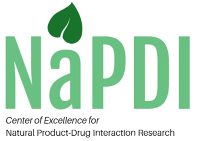The binding corrected inhibitory potential of THC and CBD – the major cannabinoids in marijuana – towards four major CYPs (CYP3A, CYP2D6, CYP2C9, and CYP2C19) suggest strong potential for clinically relevant cannabinoid-drug interactions. Unlike the studies published to date, the NaPDI reported inhibitory potencies of the cannabinoids are corrected for non-specific binding to plasticware and microsomal proteins. The cannabinoids will be further studied individually and using marijuana extract to identify potential inhibitory effects of other constituents in the extract. Results from these studies, combined with a PBPK model of the disposition of cannabinoids, will be used to predict the potential of the cannabinoids to precipitate clinical cannabinoid-drug interactions and facilitate design of clinical cannabinoid-drug interaction studies. In addition, there is a dearth of studies assessing the effect of THC and CBD on intestinal and hepatic conjugating enzymes such as UDP-glucuronosyltransferases and sulfotransferases, as well as drug transporters, including SLC and ABC transporters. Hence, future studies will aim at investigating cannabinoids as precipitants of NPDIs mediated via these understudied molecular targets.
